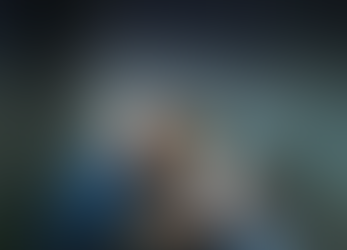Black Mirror: Art as Social Satire Review - Saatchi Gallery
- Victoria Baines
- Oct 4, 2018
- 3 min read
28 September 2018 - 13 January 2019
FREE
The Saatchi Gallery could easily be considered a parody of the contemporary art museum: huge, well-lit white spaces, opaque art pieces, and questionably tied to money. Their exhibitions frequently engage with zeitgeist topics and fully embrace the compulsion to broadcast our gallery visits over social media. More recently, however, exhibitions such as Iconoclast: Art Out of the Mainstream and Known Unknowns have felt more like an opportunity to simply display art from within Charles Saatchi’s extensive collection without any meaningful connection between them. Black Mirror: Art as Social Satire happily bucks this trend, returning to focus on provocative art at the cutting edge of the contemporary. Featuring 26 artists from around the world, Black Mirror exhibits art that reflects, and thereby forces the viewer to confront the most twisted and dark aspects of 21st century society.
The tension in the approaches of the artists’ is apparent from the first room. Two huge sculptors immediately capture the visitor’s attention: David Herbert’s 2.4m tall recreation of the VHS tape of 2001: A Space Odyssey and Bedwyr Williams’s Walk a Mile in My Shoes. The latter is a metaphor made real, containing a collection of size 13 shoes, which invite the viewer to interact with and read the associated memories of the artist. Both these pieces are delightful in their playfulness and in their refusal to take themselves seriously, despite dealing with issues of the bathos of a secular icon and the limits of empathy within individualism. Yet surrounding this playfulness is the stark, confrontational work of Michael Cline. His huge George Grosz-esq oil paintings depict grotesque scenes of violence and poverty.
A similar tension exists in the following room. On one wall the viewer is confronted with the work of Vanity Fair photographer Jessica Craig-Martin. Tightly cropped as to hide the identities of the subjects caught in her deliberately unflattering flash, these photographs force the viewers to confront the kitsch materialism of the world of the rich and famous, its loneliness and cheap sexuality. Opposite her photographer’s precision is an entire wall covered in the work of James Howard. Howard’s work delves into the strange world of spam email, his MS Paint posters composed of the bizarre images and abrasive word art discovered by clicking through the links found in his junk folder. This collection of hilarious, confusing and disconcerting images is a clear highlight of the exhibition.

Simon Bedwell, Untitled (2004)
A similar effect of juxtaposing images and text is found in the work of Simon Bedwell. Bedwell’s work is slightly more nuanced, although equally as opaque as Howard’s. At first, his collages seem readily interpreted. But the overall effect of an image of a unicorn bounding through a field, under the banner ‘The Rich Will Always Be With Us’, or the Spice Girls, apparently on a poster for the Freud Museum branded with ‘What Have We Become?’, is cutting purely because of the unabashed superficiality and shallowness of his critique.
There are, however, clear low points of the exhibition. The most obvious of these was the room almost entirely dedicated to the work of Stezaker. His portraits are composed by splicing together two photographs, either both vintage headshots, or one headshot and a landscape. Whilst uncanny, the sheer number of portraits seemed excessive and unnecessary, as well as derivative of the work of Hannah Hoch. It also seemed simply out of place in Black Mirror. Sure, they were clever, but there was no apparent social satire lying within the frames.

Valerie Hegarty, Niagara Falls (2007) <https://www.saatchigallery.com/>
Black Mirror shone as an exhibition when the artworks truly fulfilled the brief of the exhibition. Most poignant were the works of Valerie Hegarty and Dominic McGill. Hegarty’s work toes the line between painting and sculptor, each of them deliberately destroyed and decayed in a symbolically charged destruction of ideals. Most poignant is her destruction of Freidrich Church’s Niagra Falls, a creative reiteration of the critiques of the American Dream and imaginings of colonial America. Across the room is McGill’s brainstorms, one huge piece and accompanying intestine like sculpture. He pairs phrases, names and images as to provocatively suggest a link without claiming particular judgements. The detail in his drawings are breath taking, and he doesn’t hold back, for example, positioning key dates in Israel’s history, within the barbed wire of a concentration camp.
Overall, this is a clear triumph for the Saatchi, being far more cutting and relevant than recent exhibitions. Where the curation misses the mark, the effect is jarring. But this abrasion is in effect testament to the achievement of the majority of exhibition, which sees the gallery crammed with some of the most clever and thought-provoking contemporary art.
























































Comments